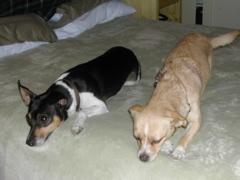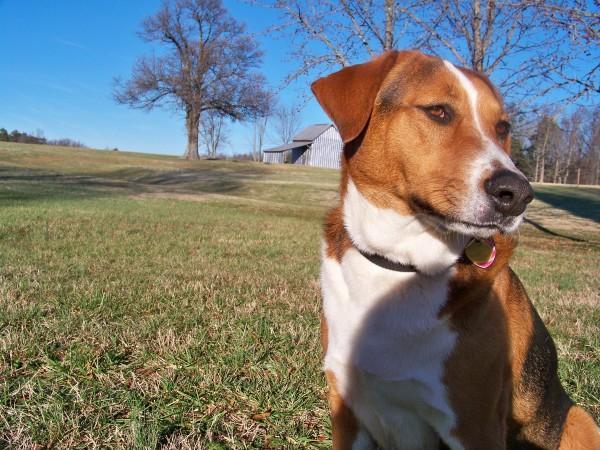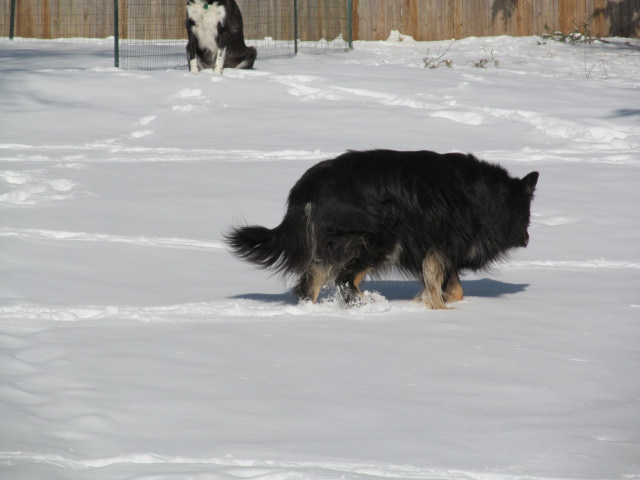Question
 Tarzan
Tarzan
Hi there!
My dog is 2 years old, 30 pounds, and a mix of beagle with some sort of terrier(s). We rescued him from the local shelter last December and he's always been a ball of pure energy. We take him in hikes in the woods, romps in the beach and the dog park, 1 hour walks, etc, so I would say he is a well exercised dog, in really good shape.
Two months ago I started training for a 5K and I have been taking him for jogs up to 3 times a week. The training builds up from short jogs up to 3.1 mile runs, which we now have reached. Although he didn't do the whole training with me, I'd say he also build it up slowly. He doesn't seem too fatigued during the long run, but usually gets back home and goes straight to bed, looking tired.
Do you think it is safe to take a medium-sized dog like him on these types of jogs? What would you say is the limit as far as mileage for a dog? I plan on moving on to training for a 10K after this, and I wanted to see if it is safe for him to train with me.
Thank you very much for taking the time to answer this!
Answer
Hi Tatiana,
I really can't say if it's safe to run your dog as you've been doing. That's a question to ask your vet. Your vet should examine your dog and assess your dog's heart, lungs, joints, ligaments, weight general fitness level. Dogs will usually try to keep up with their people just because it is their nature to do so. This can mask fatigue and overshadow signs that the dog is overdoing it. So don't push your dog too hard. If your dog is utterly exhausted after a 3.1 mile run, it just may be too long of a run for him. If you take him on shorter runs, is he any better after the run?
As you begin each exercise session, warm up with a steady walk to get the muscles working and ready before launching into more vigorous activity. Allow at least five minutes to warm up, and an equal period of time to cool down at the end of your exercise session. Humans are better suited to jogging or running for long periods nonstop than are canines, who tend to engage in short, intense bursts of running with intermittent stops to sniff around, piddle and absorb the scenery.
Assuming your dog does know how to walk at your side, start by speed-walking for about 30 seconds, then slow it down, and after a minute or so speed it up again. Randomly go fast and then slow and then fast and then faster and then slow. The idea is to teach your dog to follow your pace. If your dog tries to stop, it's usually best to let him, since that is often a clear message that he's being pushed beyond his capacity. If the dog is panting heavily or is listing from side to side, or his gait otherwise becomes uneven, slow down to a slow walk, or stop for a water and rest break. It may be time to go home.
Depending on where you live, weather conditions can affect your dog's energy level and endurance. If it's warm where you are, run very early in the morning, or in the early evening. Keep your dog's nails trimmed to reduce the chance of them splitting during your vigorous jogs, and check out your dog's footpads after you return from jogging and during your jog if the dog shows any change in gait or pace. Some surfaces, such as gravel and rock, can be very hard on dogs' feet. For lengthy walks or jogs bring water for yourself and your dog.
I hope I've been a help.
Patti


 Rescued Shiba with ISSUES
Question
Shredder
Kristin,
I consider myself an experie
Rescued Shiba with ISSUES
Question
Shredder
Kristin,
I consider myself an experie
 Vicious fighting between two females
Question
Alice and Julia
I have two female rescue dogs
Vicious fighting between two females
Question
Alice and Julia
I have two female rescue dogs
 My dogs agression
Question
This is my dog
Hi Shelley!
I have a question f
My dogs agression
Question
This is my dog
Hi Shelley!
I have a question f
 2 Year Old Dachshund Rescued From Probable Bad Situation
Question
Nelson Nelson
Hi there! I recentl
2 Year Old Dachshund Rescued From Probable Bad Situation
Question
Nelson Nelson
Hi there! I recentl
 Old dog, old owner, grooming issues
Question
Jessis
I have a 13-yr-old German shephe
Old dog, old owner, grooming issues
Question
Jessis
I have a 13-yr-old German shephe